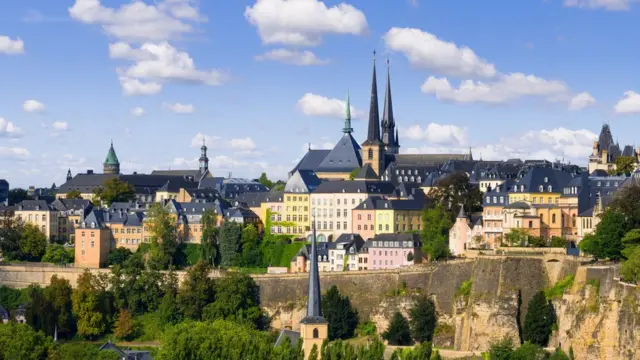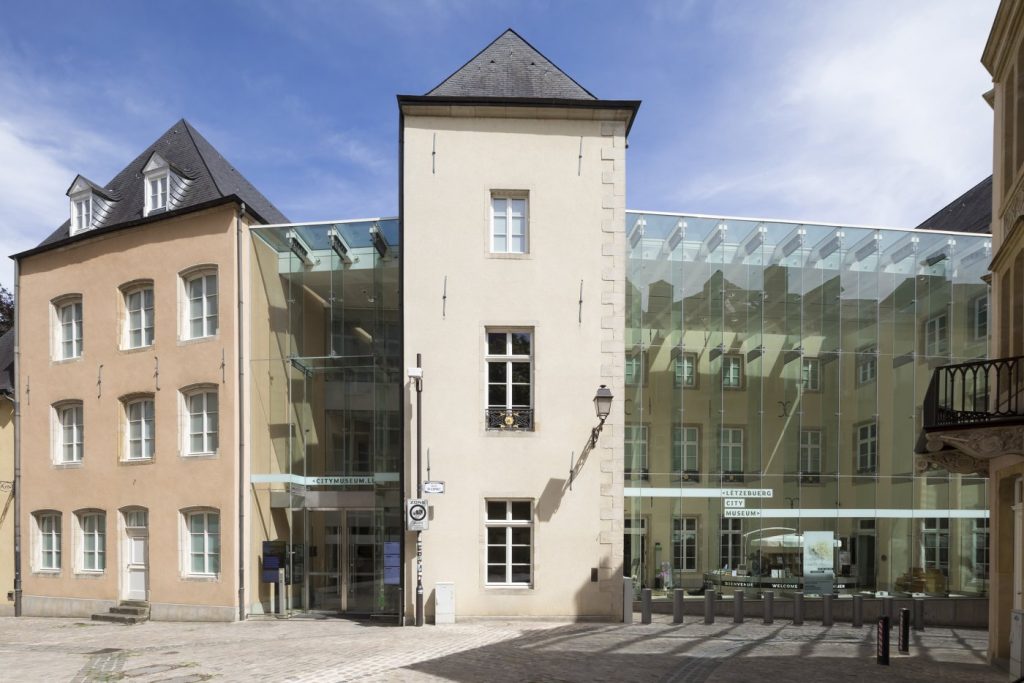Top Things to See and Do in Luxembourg City
Table of Contents
Things to do in luxembourg? Welcome to Luxembourg City: A Blend of Old-World Charm and Modern Vibrancy

Luxembourg City, the capital of the Grand Duchy, is a captivating fusion of ancient fortifications and contemporary cultural flair. Often referred to as the “Gibraltar of the North,” its strategic hilltop position at the confluence of the Alzette and Pétrusse rivers laid the foundation for centuries of military, political, and architectural significance. Today, this UNESCO-listed Old Town (Ville Haute) and the adjacent modern districts host a rich array of attractions, from subterranean labyrinths to sleek art museums, creating a city experience where history and innovation coexist in harmony.
In this post, we guide you through things to do in Luxembourg i.e., Luxembourg City’s top sights—from the maze-like Bock Casemates and stately Grand Ducal Palace to leafy parks, scenic promenades, and gastronomic delights. Along the way, you’ll discover how to weave together immersive experiences, architectural marvels, and local culture into a full-bodied itinerary that highlights everything this European capital has to offer.
1. Historical and Cultural Sites
Old Town (Ville Haute)
One thing to do in Luxembourg is to visit historical and cultural sites. The Old Town of Luxembourg City is a steep-walled plateau surrounded by lush valleys and ancient fortifications. Walking along its cobblestone streets, you’ll encounter charming squares, historic buildings, and remnants of defensive ramparts that tell a thousand-year story of power, resilience, and European intrigue. In 1994, the Old Town and its fortified complexes were inscribed as a UNESCO World Heritage site—a tribute to the city’s architectural and strategic legacy.
Bock Casemates
Arguably the most striking attraction in the city is the Bock Casemates—a vast underground network hewn into the limestone of the Bock promontory. Originating in 1644 under Spanish rule and expanded by Vauban in the 1680s, and later by Austrian engineers in the mid-18th century, this subterranean fortress once included some 23 km of tunnels reaching depths of up to 40 m. Within these galleries you’ll find former stables, bakeries, barracks, and even a 47-meter deep well supplying fresh water to the garrison.
During the seven-month siege of 1794, the fortress resisted French forces thanks to these tunnels, and during World War II, the casemates sheltered as many as 35,000 civilians. Today, around 17 km remain accessible to visitors, offering atmospheric passages lit by strategically placed loopholes with panoramic views into the valleys below. A great activity to do in Luxembourg.
Grand Ducal Palace
In the heart of Ville Haute stands the Grand Ducal Palace, official residence of Luxembourg’s monarch. Visitors can glimpse the facade, and during summertime guided tours offer insights into Luxembourg’s monarchy and national history. The beautifully preserved exterior reflects Renaissance-era architecture blended with Gothic elements, and tour groups often include a chance to see the changing of the guard in the local square. An excellent thing to do in Luxembourg.
Notre‑Dame Cathedral
Luxembourg’s only cathedral, the Notre‑Dame Cathedral (Cathédrale Notre‑Dame), is an exquisite example of late Gothic architecture infused with Renaissance elements. Its cornerstone was laid in 1613, and it was elevated to cathedral status in 1870, following a Pontifical coronation of the city’s patron saint, Our Lady of Consolation. Inside, visitors find beautiful stained glass windows and a solemn national monument to resistance and deportation featuring Lucien Wercollier’s iconic bronze statue, The Political Prisoner.
2. Museums and Galleries
Luxembourg City History Museum

Situated near the Old Town thoroughfares, the Luxembourg City History Museum invites you to step through interactive exhibitions spread across restored historic buildings. The displays blend archaeology, urban planning, and cultural heritage to tell the city’s evolution from medieval roots to modern capital.
MUDAM (Musée d’Art Moderne Grand‑Duc Jean)
Set in the modern Kirchberg district, MUDAM is Luxembourg’s premier contemporary art museum, housed in a striking structure designed by I.M. Pei. The museum hosts rotating exhibits and installations from international artists, capturing the pulse of new creative expression in Europe. A common item when looking for activities to do in Luxembourg. An excellent thing to do in Luxembourg.
National Museum of History and Art (MNHA)
Located near the Old Town, the MNHA showcases Luxembourg’s rich cultural heritage through collections ranging from archaeological artifacts to fine and decorative arts. The museum offers deep dives into the nation’s identity, visual aesthetics, and artisanal traditions.
3. Parks and Outdoor Activities
Pétrusse Valley
Looking for something more relaxed to do in Luxembourg? This scenic green valley below the Old Town is ideal for leisurely strolling. Lush vegetation, winding walkways, and remnants of former fortifications provide a tranquil escape. The valley is crossed by graceful bridges—including views of the iconic Adolphe Bridge—and framed by cliffs rising to the Old Town above.
Parc de Merl‑Belair
Located southwest of the city center, Parc de Merl‑Belair is a spacious urban park offering ponds, wooded areas, playgrounds, and picnic spaces. It’s a calm retreat from the historic core, ideal for families or quiet reflection.
Grund District
Nested at the valley floor by the Alzette river, Grund is a charming district of riverside houses, cozy cafes, and a winding network of streets and garden terraces. It’s alive during the day and transforms into a lively nightlife zone after sunset—with bars and eateries set along the tranquil waters.
4. Unique Experiences
Adolphe Bridge
On the market for unique experiences to do in Luxembourg? A symbol of the city, the Adolphe Bridge (Pont Adolphe) arches over the Pétrusse Valley, offering sweeping views in all directions. It’s also a functioning transit route, connecting Ville Haute to the modern Kirchberg plateau—a perfect vantage point for photography.
Chemin de la Corniche
Often called “Europe’s most beautiful balcony,” the Chemin de la Corniche promenade skirts the ramparts atop the Old Town, framing breathtaking views over the Grund district and Pétrusse Valley below. The path follows centuries-old fortification walls and offers vantage points of architectural gems and green vistas.
5. Food and Drink
Explore Local Cuisine
Luxembourgish cuisine reflects French, German, and Belgian influences. Signature dishes include Judd mat Gaardebounen (smoked pork with broad beans), hearty Gromperekichelcher (crispy potato pancakes), and a range of pastries and sweets. Traditional restaurants such as Um Dierfgen serve authentic local fare, while cafes across Place d’Armes and Grund offer sweet treats and local hospitality The Sun. Here are some suggestions of local cuisines to add to your list of things to do in Luxembourg.
Wine Tasting in the Moselle Valley
Just a short drive away, the Moselle Valley is known for lush vineyards and Luxembourg’s sparkling wine—Crémant de Luxembourg. Day-trip excursions include winery visits and tastings of whites like Pinot Gris, Riesling, and the city’s signature fizz offerings. An excellent thing to do in Luxembourg.
6. Shopping and Entertainment
Place d’Armes
Central to city life, Place d’Armes is a lively pedestrian square lined with cafes, shops, and frequent live music events. It’s an ideal launch point for exploring the Old Town, grabbing a drink, or lounging and enjoying people-watching.
Philharmonie Luxembourg
Set in the modern Kirchberg district, the Philharmonie boasts striking contemporary architecture and superb acoustics. Performances of classical music, jazz, and world music regularly fill the calendar. Guided tours of the building—inside and out—are popular for their design insight. An excellent place to visit or do in Luxembourg with friends.
Sample Itinerary: A Three-Day Visit
Get the quest app to plan your itinerary for things to do in Luxembourg.
Day 1 – History Immersed
- Morning: Begin in Ville Haute, visiting the Grand Ducal Palace and Notre‑Dame Cathedral.
- Midday: Head to the Luxembourg City History Museum.
- Afternoon: Descend into the Bock Casemates for a guided tour—explore the tunnels and enjoy sweeping valley views.
- Evening: Relax in Grund with dinner by the river.
Day 2 – Art & Architecture
- Morning: Visit MNHA.
- Midday: Cross Adolphe Bridge and walk the Chemin de la Corniche.
- Afternoon: Discover MUDAM and contemporary Kirchberg architecture.
- Evening: Attend a concert at the Philharmonie.
Day 3 – Nature & Gastronomy
- Morning: Enjoy a stroll in Pétrusse Valley and explore Parc de Merl‑Belair.
- Midday: Taste local delicacies at cafés around Place d’Armes.
- Afternoon: Take a short excursion to Moselle Valley for wine tasting.
- Evening: Return for a sunset walk over the Corniche, then dining in the Old Town or Grund.
Why Luxembourg City Should Be on Your Radar
Luxembourg City is small but mighty: compact and walkable, yet punchy with history, culture, and green spaces. All public transport is free, adding convenience and affordability to its accessibility. The city’s multicultural character—shaped by French, German, and native Luxembourger traditions—brings a unique blend of cuisines, languages, and social rhythms.
Whether you’re wandering underground trails of ancient tunnels, admiring modern art by Pei, savoring smoked pork with beans, or watching music unfold in a glass-walled concert hall, Luxembourg City offers a satisfying mosaic of experiences. It’s a place where every corner tells a story—of resilience, innovation, and European spirit. An excellent place to visit with a solid list of things to do in Luxembourg city.
Practical Tips
- When to visit: Late spring through early autumn offers ideal weather for walking and outdoor dining.
- Opening hours & tickets: Major sites like the Bock Casemates and museums have seasonal hours—check in advance. Casemates guided tours often require booking; entry is around €18 for adults, with reduced rates for students and children The Times.
- Getting around: Luxembourg offers free public transport within the city. Many attractions are within walking distance of one another.
- Language: Luxembourgish, French, and German are official languages. English is widely understood in tourist areas and service sectors.
In Summary
Luxembourg City’s charm lies in its seamless layering of era upon era—from 10th-century valleys and medieval castles to contemporary art’s sleek lines and concert hall acoustics. UNESCO heritage sites like the Old Town and Bock Casemates meld with leafy parks, elegant promenades, and modern entertainment to form a compact yet richly textured capital.
Whether you’re an art lover, history buff, nature walker, foodie, or architecture enthusiast, the city invites exploration at your own pace. With free transit, interwoven languages, and intimate neighborhoods, Luxembourg City is a destination that surprises, delights, and inspires. Safe travels, and enjoy your journey through Europe’s hidden gem!